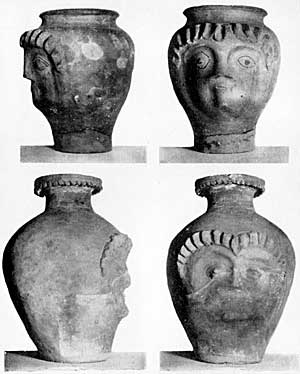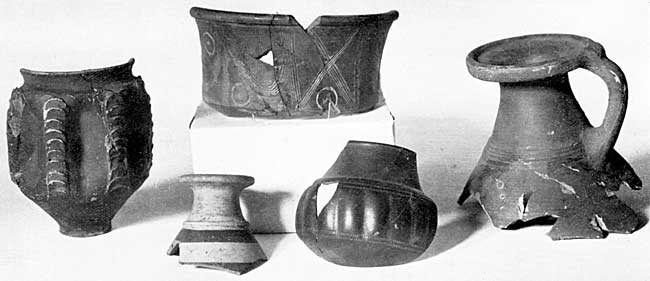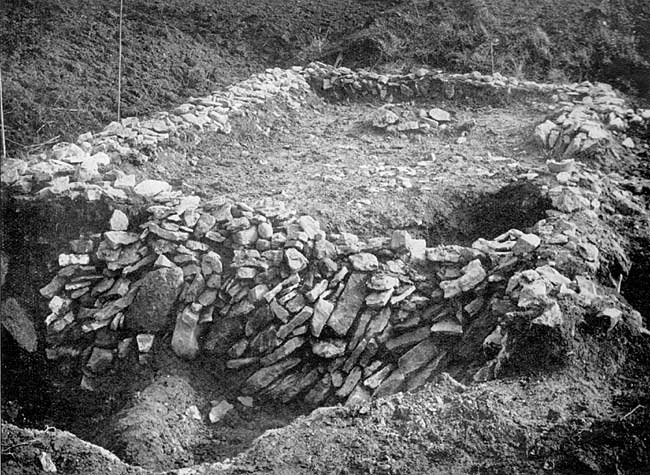 PLATE XX. Face pots of Constantine age.
PLATE XX. Face pots of Constantine age.MARGIDUNUM would appear to have been the seat of much activity in the time of Constantine; his coins are relatively common, and pottery that can be attributed to this period is not infrequent, such as face-pots (Plate XX.), a tall grey urn with high shoulder (inscribed with a cross), white jugs with brown bands or colour-coated in shades of umber (Plate XXI.), and colour-coated bowls with scrolls in white slip. The shapes of the "Samian" bowls were imitated in this ware, for "Samian" ware had now died out completely.
To the Constantine period may be ascribed a small rectangular building (just south of the main road) which yielded a coin of Crispus, son of Constantine, as well as characteristic pottery. Its western wall was built over a First Century cellar, already referred to (Plate XXII.).
After the flourishing condition of Britain under Constantine a great disaster occurred in 367 A.D., when the Picts and Scots overran the whole country as far south as London, and even the Roman commander Fullofaudes was slain in a vain attempt to stem the invasion. The undefended Roman villas fell an easy prey to the barbarians. After Theodosius had cleared Britain of the invaders in 368 A.D., we hear that he restored and re-built cities and camps that had been destroyed by the marauders, and to this period we can assign the enclosing of MARGIDUNUM by a massive stone rampart. The original area was increased by taking in the western ditches (filled up with rubbish of the Constantine period) together with the site of the old bath-house (Plate I.). I have found that this stone rampart was built upon a concrete foundation (containing Fourth Century pottery), which in all places is 9 feet in width, so that the wall was probably 18-20 feet in height. This re-fortification of MARGIDUNUM in the Fourth Century after a disastrous raid by barbarians may perhaps find an analogy in the concentration of the agricultural population in fortified castella, which was initiated by Severus in Africa and Thrace. With the exception of the building to be described, and which I find was constructed on the site and with the materials of the old baths, I have not found any other foundations of this period, although the late pottery is abundant everywhere.

PLATE XXI. Folded urn and Belgic incised urn (first century).
Jugs of fourth century age.
Indented vase with metallic lustre (second century).

PLATE XXII. Late building looking east of Constantine age, built over early cellar.
Much of the wall was still standing 60 or 70 years ago and gave rise to the modern name "Castle Hill." But it gradually disappeared, for it furnished a convenient quarry in the Middle Ages for churches, as at Bingham and East Bridgford, and in more recent times for country houses such as Flintham Hall.
